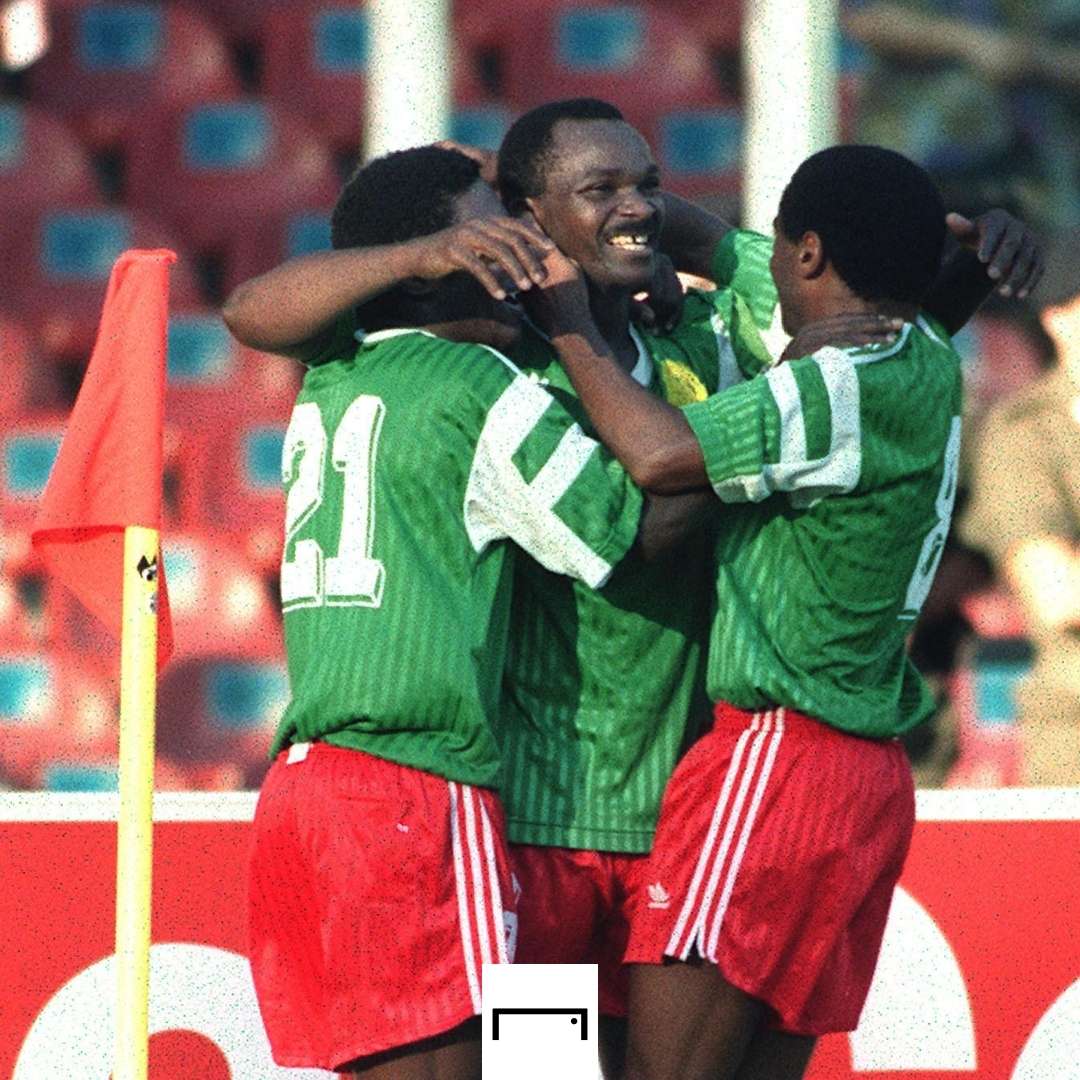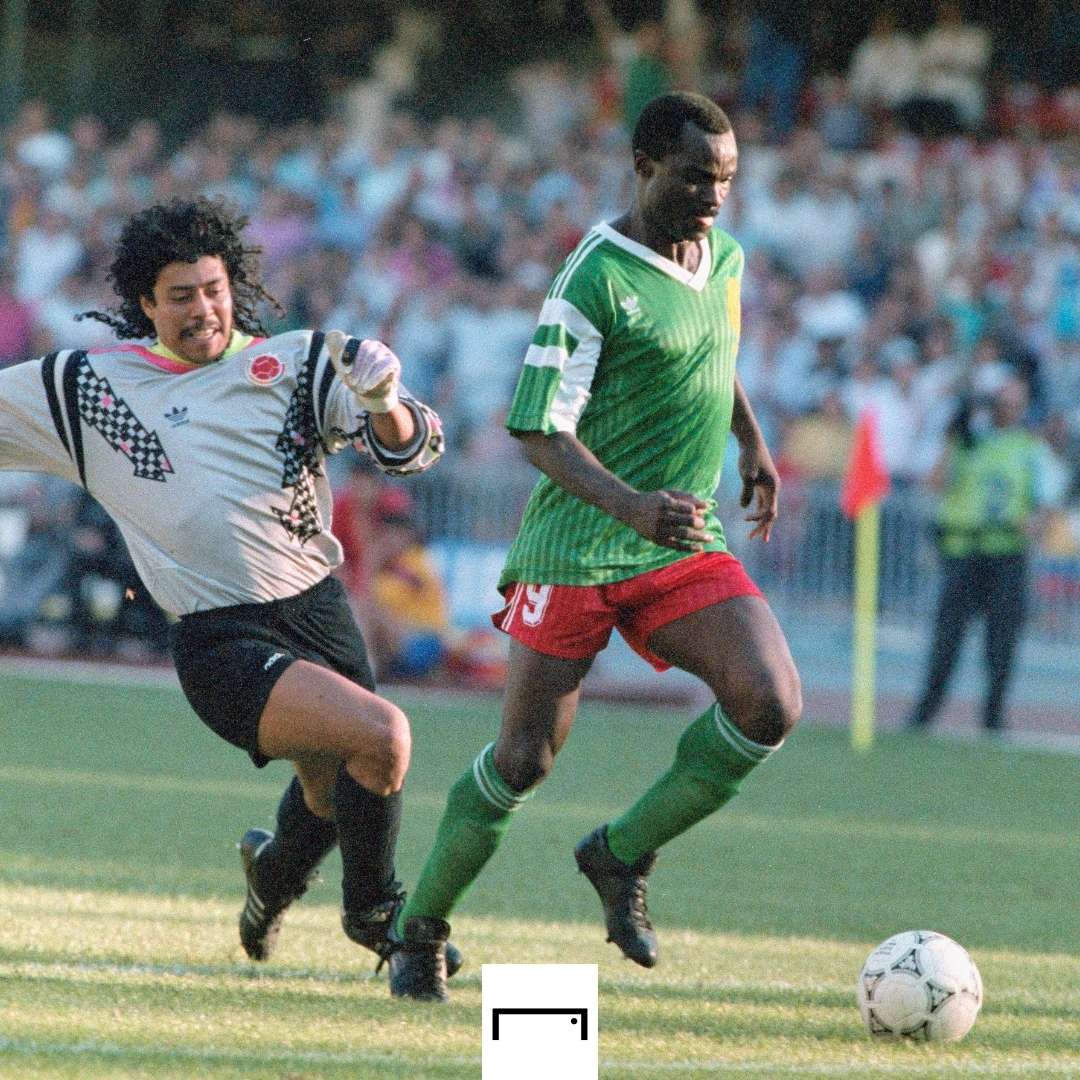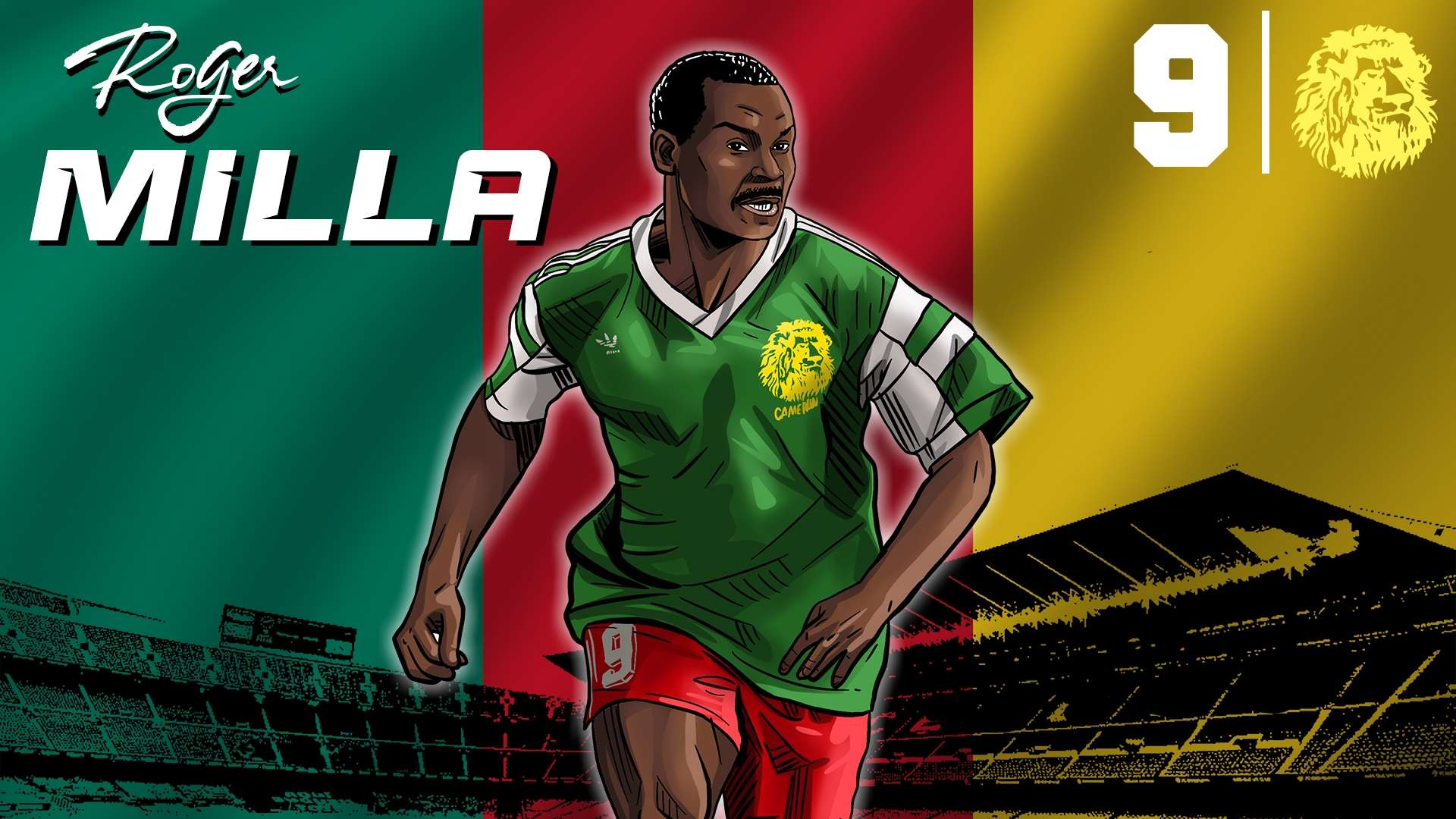Over 33 years later, Roger Milla’s iconic celebration after netting for Cameroon against Romania at Italia 90 arguably remains the moment that best encapsulates Africa’s contribution to the competition.
Milla’s hip-shimmying Makossa dance captured the continent's penchant for producing the unexpected, adding a layer of flair to a true World Cup fairy tale that resonates to this day.
There was something otherworldly about the man himself, even before he ran off to mark his first World Cup goal at the age of 38 by gyrating his hips seductively in front of a corner flag.
Against the backdrop of the cynical football that sadly dominated at Italia 90, Milla’s celebration was reminder of what football could be: fun.
Here was a seasoned professional playing with the joy of a child, as well as the individualism and panache for which African football was, and still is, renowned – in spite of its many limitations and disadvantages.
"It was instinctive," Milla, the son of a railway worker, latertold SuperSport. “It was the sun that sent me there; it was a good place to dance on the pitch.
"Today’s goalscorers aren't celebrating for the spectators but for their egos. The fans come to the stadium to have fun, to dance," he added. “Playing football and celebrating is the same... It is dancing.”
That moment, that vivid celebration, and Cameroon’s campaign also redefined – or at least updated – the world’s image of African football.
 Getty
GettyMilla recaptured the character of Zaire’s infamous World Cup campaign of 1974, but upgraded the perception with the triumphs and vibrancy of the flamboyant 1990 Indomitable Lions, who would defeat Colombia in the round of 16 to become the first African team to reach the tournament’s quarter-finals.
In the subsequent three decades, only two teams – Senegal in 2002 and Ghana in 2010 – have emulated that feat, and Milla was the figurehead for a team that can genuinely be considered as continental pioneers.
It was a moment that the world nearly missed out on.
The charismatic Milla had actually retired from international football in 1989, and Cameroon were primed to head to the tournament – their second participation – without their biggest star of the previous two decades.
The forward, calling time on his extended career, had opted to join obscure Jeunesse Sportive Saint-Pierroise on the tiny Indian Ocean island of Reunion the year before, deciding to enjoy his pension in the French archipelago.
However, Cameroon’s underwhelming performance and group-stage exit at the 1990 Africa Cup of Nations prompted a rethink on Milla and his enduring value to this team.
The favourite player of Paul Biya, then and now the President of Cameroon, a summit was called at the Palace of Unity in Yaounde, only months before the World Cup, when head coach Valery Nepomnyashchy was advised in no uncertain terms that the technical team would be "wise" to include the ageing hitman.
Presidential intervention in African national teams’ selections was nothing new then, and it still persists to this day – witness Ghana President Nana Akufo-Addo directly ordering Asamoah Gyan to reconsider his international retirement and join the Black Stars at the 2019 Afcon in Egypt – but never before and never since has such an intercession transformed a nation’s footballing history.
 Getty/GOAL
Getty/GOALMilla’s goalscoring achievements at the 1990 World Cup and his record-setting performance at USA 94, when, at 42, he became the then-oldest player and still-oldest goalscorer in tournament history are the feats that have assured him a spot in the global footballing psyche.
However, they detract from the broader footballing achievements of a player who won his first African Footballer of the Year award in 1976 – a whopping 14 years before his finest hour in Italy.
His success in ’76 was one of two African Ballons d’Or – the other coming in 1990 – and no player has ever had a greater gap between two such triumphs.
He made the podium on a further three occasions – only Didier Drogba, George Weah and Samuel Eto’o have finished among the continent’s top three more times – while Milla was also part of the ground-breaking Cameroon team who were eliminated from the 1982 World Cup without losing a game.
Supremely fit, ageing legs nonetheless prevented him from taking a starting role for Cameroon during the World Cup, although Milla relished his super-sub brief, later claiming he would watch for opponents’ weaknesses before exploiting them ruthlessly after his introduction.
 Getty/GOAL
Getty/GOALLongevity is a big element of his legend, of course, but often overlooked is that Milla enjoyed success in French football as well, clinching the French Cup with Monaco a decade before his World Cup heroics, while also winning silverware with Bastia and Montpellier.
His goalscoring record at Saint-Etienne (31 goals in 59 league games) stands up with some of the most feared marksmen in Ligue 1 history, while his overall record in the French top flight (51 goals in 150 games) remains an admirable ratio, particularly considering the gulf in quality between the Cameroonian top flight and French football in the late 70s.
Milla is an icon of Cameroonian heavyweights Tonnerre Yaounde, with whom he won the African Cup Winners’ Cup in 1975, and was twice an Afcon champion with the great Cameroon team of the 80s.
There was no shortage of raw talent either, as England’s defenders found out in that 1990 quarter-final, where the super-sub came off the bench to force the Three Lions defence into giving away a penalty, before then setting up Eugene Ekeke for the Africans’ equaliser.
“Milla could maybe have been the greatest player of all time – in the image of Brazil’s Pele,” said legendary ex-Cameroon coach Claude Le Roy, “if only he’d benefited from the appropriate promotion and framework.”
Regardless, Milla’s place in World Cup folklore and among the pantheon of African football greats, is secure.
His career was about much more than just that celebration against Romania, but the glorious joy it conveyed made him a cult hero for many more beyond the continent he called home.
